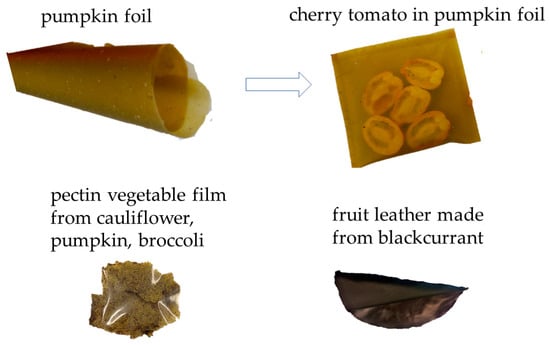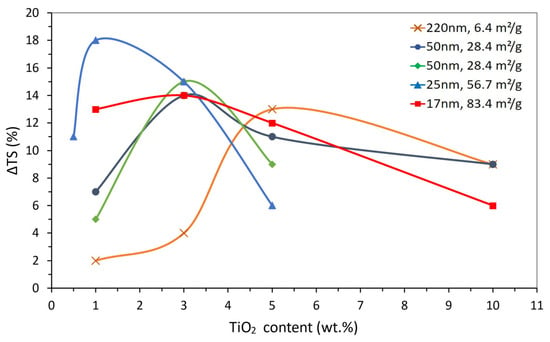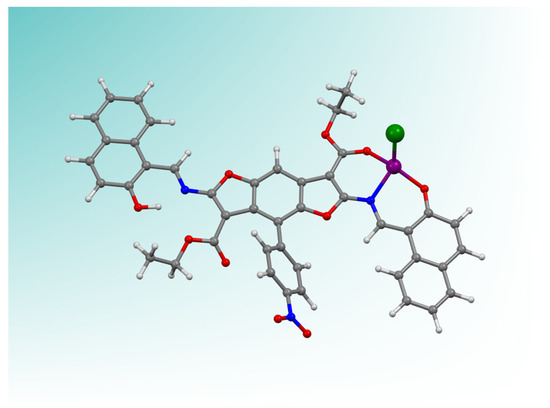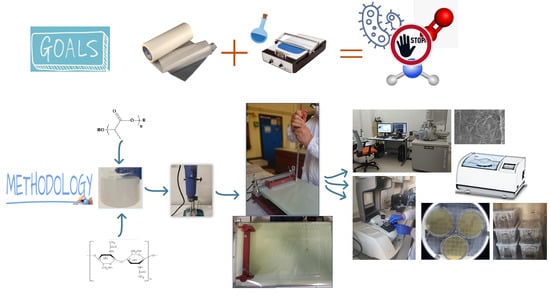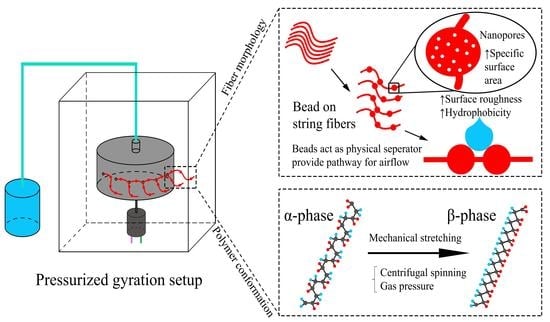Recent Advances in Sustainable Applications of Polymers
(Closed)
Share This Topical Collection
Editors
 Dr. Felipe Vannucchi de Camargo
Dr. Felipe Vannucchi de Camargo
 Dr. Felipe Vannucchi de Camargo
Dr. Felipe Vannucchi de Camargo
E-Mail
Collection Editor
SENAI Institute of Innovation in Polymer Engineering, Av. Pres. João Goulart, 682-Morro do Espelho, São Leopoldo 93030-090, RS, Brazil
Interests: structural analysis; stress analysis; composite materials; polymers; fiber-reinforced materials; finite element analysis
 Dr. Cristiano Fragassa
Dr. Cristiano Fragassa
 Dr. Cristiano Fragassa
Dr. Cristiano Fragassa
E-Mail
Website
Collection Editor
Department of Industrial Engineering, Alma Mater Studiorum University of Bologna, Viale del Risorgimento 2, 40136 Bologna, Italy
Interests: mechanical engineering; advanced materials; materials engineering; structural analysis; composite material; mechanical design; manufacturing engineering; quality in industry
Special Issues, Collections and Topics in MDPI journals
Topical Collection Information
Dear Colleagues,
In recent decades, the need for more sustainable processes and products has progressively become the focal point of large innovative engineering developments. Materials, especially polymer-based, play a key role within this subject, standing out for unique combinations of relevant properties such as low density, chemical inertness, reduced emission during processing, recyclability potential, the possibility of synthesizing renewable vegetal resources and many other features. Thus, the present Special Issue aims at gathering reviews and research related to the latest sustainability-driven innovations made possible through polymer engineering. Papers dealing with the following topics are particularly welcome for submission:
- Eco-design by polymers;
- Renewable resources for sustainable production of polymers;
- Polymer composites and nano-composites;
- Lightweight structures;
- Renewable materials;
- Low impact polymeric coatings;
- Sustainable adhesives;
- Sustainable elastomers;
- Engineering applications of polymers;
- Experimental research for sustainable polymers;
- CAE/FEA.
Dr. Felipe Vannucchi de Camargo
Dr. Mohammad Fotouhi
Prof. Dr. Cristiano Fragassa
Guest Editors
Manuscript Submission Information
Manuscripts should be submitted online at www.mdpi.com by registering and logging in to this website. Once you are registered, click here to go to the submission form. Manuscripts can be submitted until the deadline. All submissions that pass pre-check are peer-reviewed. Accepted papers will be published continuously in the journal (as soon as accepted) and will be listed together on the collection website. Research articles, review articles as well as short communications are invited. For planned papers, a title and short abstract (about 100 words) can be sent to the Editorial Office for announcement on this website.
Submitted manuscripts should not have been published previously, nor be under consideration for publication elsewhere (except conference proceedings papers). All manuscripts are thoroughly refereed through a single-blind peer-review process. A guide for authors and other relevant information for submission of manuscripts is available on the Instructions for Authors page. Polymers is an international peer-reviewed open access semimonthly journal published by MDPI.
Please visit the Instructions for Authors page before submitting a manuscript.
The Article Processing Charge (APC) for publication in this open access journal is 2700 CHF (Swiss Francs).
Submitted papers should be well formatted and use good English. Authors may use MDPI's
English editing service prior to publication or during author revisions.
Published Papers (5 papers)
Open AccessReview
The Potential of Edible Films, Sheets, and Coatings Based on Fruits and Vegetables in the Context of Sustainable Food Packaging Development
by
Monika Janowicz, Sabina Galus, Agnieszka Ciurzyńska and Małgorzata Nowacka
Cited by 9 | Viewed by 4623
Abstract
Several consumable substances, including fruit and vegetable purees, extracts, juices, and plant residue, were analyzed for their matrix-forming potential. These matrices serve as the basis for the production of edible films, sheets, and coatings that can be eaten as nutritional treats or applied
[...] Read more.
Several consumable substances, including fruit and vegetable purees, extracts, juices, and plant residue, were analyzed for their matrix-forming potential. These matrices serve as the basis for the production of edible films, sheets, and coatings that can be eaten as nutritional treats or applied to food products, thereby contributing to their overall good quality. Furthermore, this innovative approach also contributes to optimizing the performance of synthetic packaging, ultimately reducing reliance on synthetic polymers in various applications. This article explores the viability of incorporating fruits and vegetables as basic ingredients within edible films, sheets, and coatings. The utilization of fruits and vegetables in this manner becomes achievable due to the existence of polysaccharides and proteins that facilitate the formation of matrices in their makeup. Moreover, including bioactive substances like vitamins and polyphenols can impart attributes akin to active materials, such as antioxidants or antimicrobial agents. Advancing the creation of edible films, sheets, and coatings derived from fruits and vegetables holds great potential for merging the barrier and mechanical attributes of biopolymers with the nutritional and sensory qualities inherent in these natural components. These edible films made from fruits and vegetables could potentially serve as alternatives to seaweed in sushi production or even replace conventional bread, pancakes, tortillas, and lavash in the diet of people suffering from celiac disease or gluten allergy, while fruit and vegetable coatings may be used in fresh and processed food products, especially fruits and vegetables but also sweets.
Full article
►▼
Show Figures
Open AccessReview
Using Thermomechanical Properties to Reassess Particles’ Dispersion in Nanostructured Polymers: Size vs. Content
by
Joel Boaretto, Robinson Carlos Dudley Cruz, Felipe Vannucchi de Camargo, Guilherme Luís Cordeiro, Cristiano Fragassa and Carlos Pérez Bergmann
Viewed by 1290
Abstract
Nanoparticle-filled polymers (i.e., nanocomposites) can exhibit characteristics unattainable by the unfilled polymer, making them attractive to engineer structural composites. However, the transition of particulate fillers from the micron to the nanoscale requires a comprehensive understanding of how particle downsizing influences molecular interactions and
[...] Read more.
Nanoparticle-filled polymers (i.e., nanocomposites) can exhibit characteristics unattainable by the unfilled polymer, making them attractive to engineer structural composites. However, the transition of particulate fillers from the micron to the nanoscale requires a comprehensive understanding of how particle downsizing influences molecular interactions and organization across multiple length scales, ranging from chemical bonding to microstructural evolution. This work outlines the advancements described in the literature that have become relevant and have shaped today’s understanding of the processing–structure–property relationships in polymer nanocomposites. The main inorganic and organic particles that have been incorporated into polymers are examined first. The commonly practiced methods for nanoparticle incorporation are then highlighted. The development in mechanical properties—such as tensile strength, storage modulus and glass transition temperature—in the selected epoxy matrix nanocomposites described in the literature was specifically reviewed and discussed. The significant effect of particle content, dispersion, size, and mean free path on thermomechanical properties, commonly expressed as a function of weight percentage (wt.%) of added particles, was found to be better explained as a function of particle crowding (number of particles and distance among them). From this work, it was possible to conclude that the dramatic effect of particle size for the same tiny amount of very small and well-dispersed particles brings evidence that particle size and the particle weight content should be downscaled together.
Full article
►▼
Show Figures
Open AccessArticle
A DR/NIR Hybrid Polymeric Tool for Functional Bio-Coatings: Theoretical Study, Cytotoxicity, and Antimicrobial Activity
by
Rosita Diana, Francesco Silvio Gentile, Simona Concilio, Antonello Petrella, Raffaella Belvedere, Martina Schibeci, Angela Arciello, Luigi Di Costanzo and Barbara Panunzi
Cited by 4 | Viewed by 1780
Abstract
Among modern biomaterials, hybrid tools containing an organic component and a metal cation are recognized as added value, and, for many advanced biomedical applications, synthetic polymers are used as thin protective/functional coatings for medical or prosthetic devices and implants. These materials require specific
[...] Read more.
Among modern biomaterials, hybrid tools containing an organic component and a metal cation are recognized as added value, and, for many advanced biomedical applications, synthetic polymers are used as thin protective/functional coatings for medical or prosthetic devices and implants. These materials require specific non-degradability, biocompatibility, antimicrobial, and antiproliferative properties to address safety aspects concerning their use in medicine. Moreover, bioimaging monitoring of the biomedical device and/or implant through biological tissues is a desirable ability. This article reports a novel hybrid metallopolymer obtained by grafting zinc-coordinated fragments to an organic polymeric matrix. This hybrid polymer, owing to its relevant emission in the deep red to near-infrared (DR/NIR) region, is monitorable; therefore, it represents a potential material for biomedical coating. Furthermore, it shows good biocompatibility and adhesion properties and excellent stability in slightly acidic/basic water solutions. Finally, in contact with the superficial layers of human skin, it shows antimicrobial properties against
Staphylococcus aureus bacterial strains.
Full article
►▼
Show Figures
Open AccessArticle
Antimicrobial and Gas Barrier Crustaceans and Fungal Chitin-Based Coatings on Biodegradable Bioplastic Films
by
Luca Panariello, Maria-Beatrice Coltelli, Ahdi Hadrich, Francesca Braca, Stefano Fiori, Amit Haviv, Filip Miketa, Andrea Lazzeri, Andreas Staebler, Vito Gigante and Patrizia Cinelli
Cited by 7 | Viewed by 4066
Abstract
Chitin nanofibrils (CN) can be obtained from crustaceans and fungal sources and can be used for preparing coatings for bioplastic films, that are fundamental for developing a safe and sustainable biodegradable food packaging. Coatings with different concentrations of CN from shrimps were applied
[...] Read more.
Chitin nanofibrils (CN) can be obtained from crustaceans and fungal sources and can be used for preparing coatings for bioplastic films, that are fundamental for developing a safe and sustainable biodegradable food packaging. Coatings with different concentrations of CN from shrimps were applied on different bioplastic substrates, like Poly (butylene succinate-co-adipate)/Poly(3-hydroxybutyrate-co-3-hydroxyvalerate (PBSA/PHBV) blend, Polybutylene succinate (PBS), and Polybutylene adipate terephthalate/Poly(lactic acid) (PBAT/PLA) blend, but the adhesion to the substrates was scarce. On the contrary, the fungal-based CN showed a better adhesion. Additionally, it was found that the use of an additive based on oligomeric lactic acid was useful to prepare a coating with an improved adhesion to bioplastics. The gas barrier properties to oxygen and water vapour of coated and un-coated films were measured, revealing an improvement of these properties thanks to applied coatings, especially towards the oxygen. Antimicrobial properties and biodegradation capacity were also evaluated revealing an antibacterial effect of the coatings that did not significantly interfere with their biodegradability. The results are discussed and interpreted considering the correlation between composition and macromolecular structures with the observed functional properties.
Full article
►▼
Show Figures
Open AccessArticle
Facile One-Step Synthesis of PVDF Bead-on-String Fibers by Pressurized Gyration for Reusable Face Masks
by
Ruiran Huang, Yanqi Dai, Jubair Ahmed and Mohan Edirisinghe
Cited by 5 | Viewed by 1770
Abstract
Single-use face masks pose a threat to the environment and are not cost-effective, which prompts the need for developing reusable masks. In this study, pressurized gyration (PG) successfully produced bead-on-string polyvinylidene fluoride (PVDF) fibers with fiber diameters ranging from 2.3 μm to 26.1
[...] Read more.
Single-use face masks pose a threat to the environment and are not cost-effective, which prompts the need for developing reusable masks. In this study, pressurized gyration (PG) successfully produced bead-on-string polyvinylidene fluoride (PVDF) fibers with fiber diameters ranging from 2.3 μm to 26.1 μm, and bead diameters ranging from 60.9 μm to 88.5 μm by changing the solution parameters. The effect of the solution parameters on the crystalline phase was studied by Fourier-transform infrared spectroscopy (FT-IR), where the β-phase contents of PG PVDF fibers reached over 75%. The fiber morphology and β-phase contents of PG PVDF fibers indicated the potential mechanical and electrostatic filtration efficiency of PG PVDF fibers, respectively. Additionally, the hydrophobicity was investigated by static water contact angle tests, and the PVDF fibers showed superior hydrophobicity properties (all samples above 125°) over commercial polypropylene (PP) single-use masks (approximately 107°). This study supports the notion that the PG PVDF fiber mats are a promising candidate for future reusable face masks.
Full article
►▼
Show Figures








